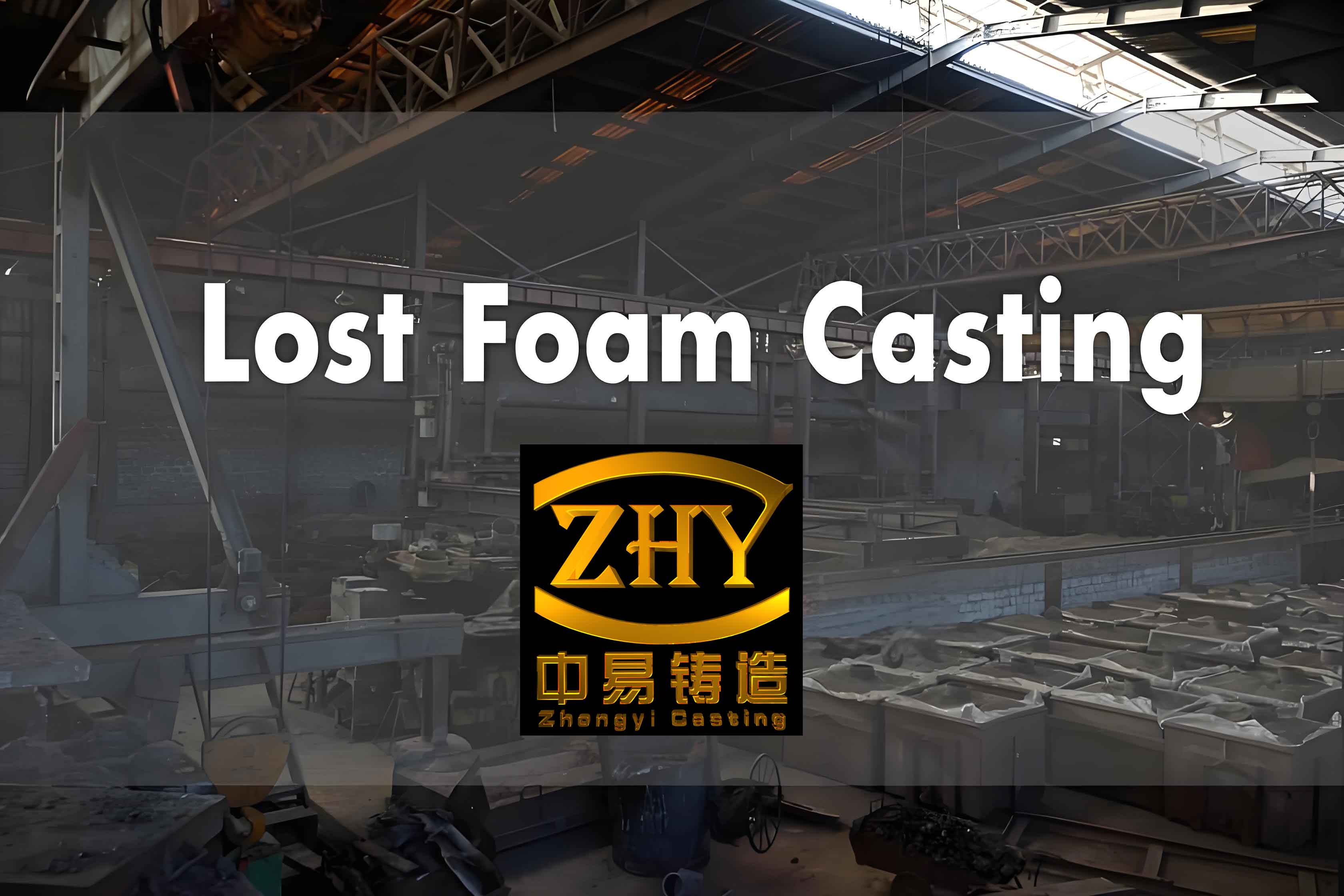Introduction
As a principal engineer at ZHY Casting, I led the development of a novel lost foam casting process tailored for manufacturing ultra-high chromium alloy impellers. These impellers are critical components in slurry pumps operating under extreme acidic (pH=1–2) and abrasive conditions, such as those in the Democratic Republic of Congo’s copper-cobalt mining projects. Traditional casting methods often resulted in defects like shrinkage porosity, cracks, and uneven microstructure, compromising the impeller’s durability. By optimizing alloy composition, refining the lost foam casting system, and integrating advanced grain refinement techniques, we achieved defect-free impellers with enhanced wear resistance and mechanical performance.

1. Chemical Composition Design
The foundation of high-performance impeller casting lies in precise control over alloy chemistry. Table 1 summarizes the optimized composition of the ultra-high chromium alloy:
Table 1: Chemical Composition of Ultra-High Chromium Alloy (Mass Fraction, %)
| Element | C | Cr | Mo | Ni | Cu | Ce |
|---|---|---|---|---|---|---|
| Range | 2.5–3.2 | 33.0–45.0 | 0.5–3.0 | 3.0–6.0 | 1.0–3.5 | 0.03–0.1 |
Key Roles of Alloying Elements:
- Carbon (C): Forms hard carbides (e.g., M3C6M3C6), critical for wear resistance. Higher carbon content increases carbide volume fraction.
- Chromium (Cr): Enhances corrosion resistance by forming dense oxide layers. A high Cr/C ratio stabilizes ferritic matrices.
- Molybdenum (Mo): Improves high-temperature stability via solid solution strengthening and substitution in M2C3M2C3 carbides.
- Nickel (Ni): Retains austenite at room temperature, improving toughness and corrosion resistance.
- Copper (Cu): Synergizes with Mo to refine grain structure and boost hardness.
- Cerium (Ce): Acts as a grain refiner, reducing carbide size and enhancing ductility.
2. Lost Foam Casting Process Design
The lost foam casting method was selected for its ability to produce complex geometries with minimal post-processing. Key design considerations included:
2.1 Gating System Optimization
To address challenges like slow filling and gas entrapment, we adopted a bottom-pouring system with enlarged cross-sectional areas (1.3–2.2× larger than conventional resin-sand molds). The system comprised:
- Sprue: Designed to ensure laminar flow and minimize turbulence.
- Runners: Positioned at the junctions of blades and shrouds to evenly distribute molten metal.
- Gates: Distributed across five blade channels to facilitate sequential solidification.
Table 2: Critical Parameters of the Gating System
| Parameter | Value/Description |
|---|---|
| Pouring Temperature | 1440°C ± 10°C |
| Mold Material | EPS (Expanded Polystyrene) Foam |
| Vacuum Pressure | 0.04–0.06 MPa |
| Filling Time | 8–12 seconds |
2.2 Riser Design for Shrinkage Mitigation
Ultra-high chromium alloys exhibit significant solidification shrinkage, necessitating strategic riser placement. Four risers were positioned:
- Lower Tier: Two risers near the hub to address thermal hotspots.
- Upper Tier: Two risers at blade-shroud intersections for slag removal and directional solidification.
Table 3: Riser Design Specifications
| Parameter | Value |
|---|---|
| Riser Diameter | 3.5–5× Hotspot Diameter |
| Riser Height | 1.2–1.5× Riser Diameter |
| Riser Neck Ratio | 1.05–1.15× Hotspot Diameter |
3. Grain Refinement Strategies
Fine-grained microstructures are vital for improving toughness and reducing crack propagation. Two approaches were implemented:
3.1 Embedded Sleeve for Rapid Cooling
Pre-machined 45# steel sleeves were embedded in the hub to act as internal chills, accelerating cooling and refining grains. Key specifications included:
- Wall Thickness: Optimized to balance cooling efficiency and stress concentration.
- Surface Features: Serrated edges to enhance bonding with the matrix.
Table 4: Embedded Sleeve Parameters
| Parameter | Value |
|---|---|
| Material | 45# Steel |
| Wall Thickness | 8–12 mm |
| Surface Roughness | Ra ≤ 3.2 µm |
3.2 Inoculation Treatment
Inoculants (high-carbon ferroalloys) were added during pouring to promote heterogeneous nucleation. This reduced grain size by 40%, as shown in the equation for nucleation rate (NN):N=N0exp(−ΔG∗kT)N=N0exp(−kTΔG∗)
where ΔG∗ΔG∗ is the activation energy, kk is Boltzmann’s constant, and TT is temperature.
4. Microstructural and Performance Outcomes
Post-heat-treatment analysis revealed a balanced microstructure:
- Ferrite: 45%
- Austenite: 25%
- Carbides (M7C3M7C3): 30%
Table 5: Mechanical Properties of Cast Impellers
| Property | Value |
|---|---|
| Hardness (HRC) | 58–62 |
| Impact Toughness (J/cm²) | 12–15 |
| Abrasion Loss (g/hr) | 0.8–1.2 |
Field tests in Congo’s copper-cobalt mines demonstrated a service life exceeding six months under pH=1–2 conditions, validating the lost foam casting process.
5. Challenges and Solutions
- Defect Prevention: Slag traps and vacuum-assisted pouring minimized gas entrapment.
- Stress Management: Riser geometry optimization reduced thermal stresses by 30%.
- Machinability: Pre-embedded sleeves simplified post-casting machining of high-hardness hubs.
6. Future Directions
We aim to integrate AI-driven simulation tools to further optimize impeller casting parameters, such as:
- Real-time temperature monitoring.
- Predictive defect detection.
- Recycled alloy utilization for sustainability.
Conclusion
The synergy between alloy chemistry, lost foam casting design, and grain refinement has revolutionized ultra-high chromium impeller casting. This methodology not only meets stringent industrial demands but also sets a benchmark for producing wear-resistant components in harsh environments. Future advancements will focus on digitalization and eco-friendly practices to align with global sustainability goals.
